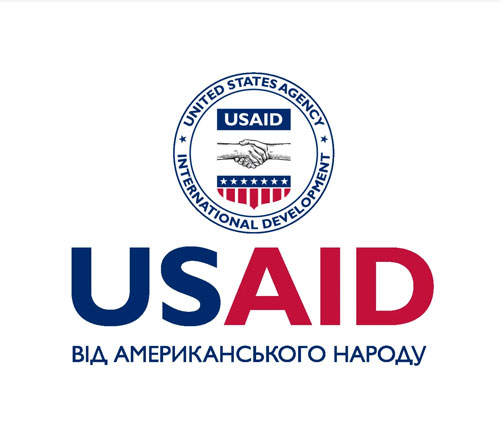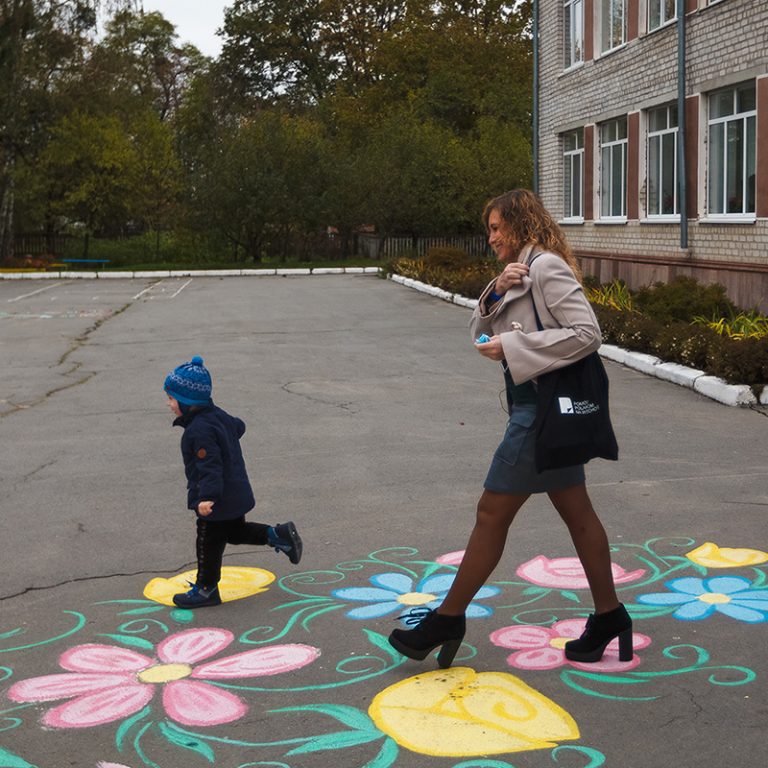The Polish community, which has been living in what is now Ukraine since Kyivan Rus’, was one of the first to suffer from Soviet repression. In the 1930’s Poles were one of the first to be deported from Volynto Central Asia. Nowadays about 145 thousand people of Polish origin live in Ukraine. The largest communities inhabit the regions of Volyn, Podillia and Halychyna. Since Ukraine gained independence, local Polish communities have been able to peacefully live, work, go to church, celebrate their culture and teach younger generations their history.
The first Polish settlements and communities in cities were formed in the times of Kyivan Rus’. The Polish district located along the Liadsky Gate in the centre of Kyiv, which was built during the reigns of Yaroslav Mudry, who regularly organised marches to Polish territories, is proof of that. The first waves of Polish colonization started in the Middle Ages. After the Halychyna-Volyn region was occupied in the 14th century, the first Roman Catholic eparchies in villages and towns of Halychyna have formed when Polish priests and adherents settled there.
Nowadays about 145 thousand people make up the Polish diaspora in Ukraine.
The largest communities live in Podillia and Volyn a smaller one in Halychyna. In Podillia, the largest city by number of Polish inhabitants in Khmelnyckyi and the villages surrounding it. Most of them are the descendants of Masurian Poles who have been forced to move there at the beginning of the 17th century. In Volhyn most Poles live in the villages surrounding Zhytomyr, the most famous Polish village of this region is Dovbysh, which in the 1930s used to be part of the so called Mikhalevsk Polish Minority District, an artificial entity created by the Soviets.

Dovbysh. The family of Valentyna
The first mentions of Dovbysh come from the 16th century. One theory about the origin of the name is that it comes from the Ukrainian word for a drummer and it was named that because a drummer opened an inn there. Until the 1980s most inhabitants of the village were Poles, nowadays they make up half of the population, the other half being either Ukrainian, Belarusian or Azerbaijani.
Valentyna Yusupowa, née Sytnicka, comes from a family of Poles, who used to live in Dovbysh for generations. She and her brother were raised in the Polish culture. Every week, as well as for religious holidays, her family would go to [a Catholic] church. At home, she would talk to her parents in both Polish and Ukrainian. It was the same with the church service, recalls Valentyna, as it was also provided in two languages.
Valentyna’s father, Kazymyr Sytnickyi, is of Polish origin. When he was little, he used to speak Polish to his parents, but he speaks Ukrainian to his children. When asked which nationality he belongs to, he says confidently:
— Ja jestem Polak! [I am Polish!]
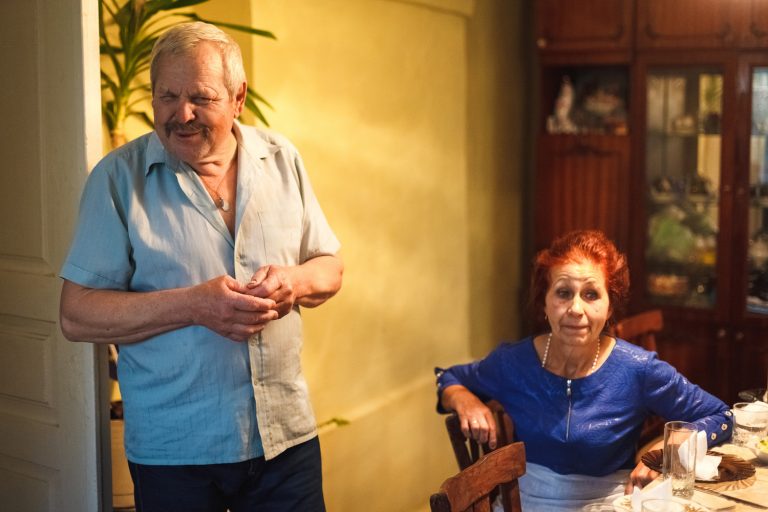
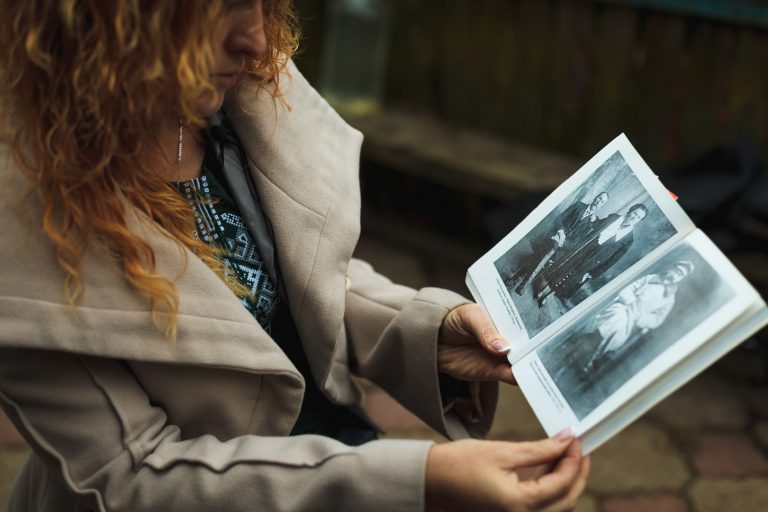
slideshow
His father fought for the Red Army and was taken captive. At the time of his escape, people whoever got caught would be shot on sight. Nonetheless, he managed to flee to Elba, where he met British and American soldiers. He told us how war prisoners were sent to work labor camps in Syberia after the Second World War ended.
— My dad could do everything: he used to sew horse tack, he worked as a chimney sweep, he also opened a bakery. The oldest family member I remember is my grandmother — she was born in 1863 and died in 1972. She lived 109 years! Grandma Petrunelia came from the Borkovsky family and my mom from the Torovsky family. My dad’s surname — Sytnickyi. The same as mine.
Valentyna Yusupova has been the leader of the civic organization “Studentskyj Polskyj Klub” [Polish Students’ Club] for almost 10 years, which she and her colleagues from the Polish Science Association started. She used to lead scientific and educational projects there. The club arranges education and internships for Ukrainian students of Polish origin (and others) in Poland, as well as free Polish courses.
The club also organises exhibitions and educational projects revolving around the history of Poles in Volyn. Valentyna studies and passes on history of her family and country, just like her parents. One of the topics she researches with her colleagues is the establishment [in Volhyn] of the first Polish “minority district” in the Soviet Union, which met a tragic end.

The Polish minority district. Repression and shootings
Dobysh is famous among those who fell victim to an experiment during the Soviet rule: in 1925 a couple of villages were merged into the USSR’s first Polish minority district, named after Yulian Markhlevskyi. Markhlevskyi was a Bolshevik who managed the Communist University of the National Minorities of the West in Moscow. After his death in 1926 Dovbysh has been renamed to Markhlevsksk.
The Markhlevsk district included almost three dozen villages, among which the closest to Dovbysh were Hruzlyvets, Pavlivka, Sheremetiv and Adamivka. These villages were inhabited almost exclusively by Poles.
Deportation of Poles from the Soviet Union
The Polish population of Dovbysh and the rest of the villages of the Markhlevsk Polish Minority District became the first deported people in the Soviet Union, and in 1935–1936 they were deported to the eastern regions of the USSR and the northern regions of Kazakhstan. The villagers also fell victim to the mass repressions of 1937-1938.— A Polish cell was artificially created to keep Poles in one place. But Poles, if you look at history, are quite disobedient when their rights are abused, including when it comes religion.
Forced collectivization in the Polish nation was slower than in Ukraine as a whole. In the 1930s, the Polish population of the Markhlevsk district was subjected to Soviet repression. In 1935, the minority district of Poles was liquidated, and most Poles were deported to Kazakhstan. In 1944, the village was given back its historical name — Dovbysh.

In 1930, on the border with the Markhlevsk district around the village of Pulina, the Pulina German district was formed, which existed for 5 years. As with the Polish district, they tried to keep the Germans in one cell so that they could manipulate them easily.
— For the first five years, the Markhlevsk district seemed to flourish: schools and libraries were opened; Poles could be members of governing boards. But for the next five years, the Soviet authorities saw that the Poles still did not give in to the manipulation, that they did not fully accept the views of the Soviet Union. Something had to be done with these Poles, that is, to punish them for being disobedient, for obstructing the Soviet Union in spreading its ideology there. Accordingly, 1935-1936 were the years when huge numbers of Poles were expelled from Markhlevsk to Kazakhstan. They left with their families. The following years, 1937 and 1938, when they were not brought in for various reasons, are known to be the years when Poles were shot en masse. In the Soviet Union, either you are a person in the system, or you are not a person.
Valentina says that many Poles were shot in this area. It also affected her family. The Sytnytsky family knew about it, but for a long time they didn’t get to see the fabricated reasons for which their grandfathers were shot
— At one point I became interested in finding documents about my family, and it was a big surprise for my parents when we already have declassified cases. Because they have been classified for a long time. We have copies of documents where we can see that a person was shot because he was just a person. Because she had two chickens and a cow. What was said against the government, which at that time was not aimed at the people, but only at some ideology.
The years 1937-1938 are known in the history of the USSR as the Great Terror or the Great Purge, when mass repressive operations took place against the kulaks, the clergy, and wealthy people of the tsarist period. Simultaneously with the kulak operation, representatives of the peoples whose states had borders with the USSR, in particular the Poles, were repressed. Mass arrests on national grounds have begun in Ukraine. In the Zhytomyr region from October 1937 to March 1938, 7,993 people were arrested on the “Polish line”, of whom 7,113 were sentenced to death.
— Repressions were everywhere. Who is not “Russian” — everyone was shot. He spoke out against the Soviet government, against the collective farm, against collectivization — they shot. And they didn’t ask who he was.

Roman Catholic Church. Hiding to pray
The center of Dovbysh’s cultural and spiritual life is the Roman Catholic Church of Our Lady of Fatima, built by monks of the Pallottine Order under the leadership of Father Oleksandr Milevsky in the early 1990s. Until then, there was a small chapel in the village, where all local believers went to pray. Valentina remembers going to the holidays with her parents when she was five. When a church was built in the village after the collapse of the Soviet Union, believers from the surrounding villages also began to come there. The service was initially conducted exclusively in Polish.
Pallottines
Roman Catholic religious society, founded in the XIX century. St. Vincent Pallotti in Rome. Its purpose is missionary work and the strengthening of faith among Catholics.— The priests were from Poland, all prayers were in Polish and at home with my parents we also prayed in Polish, although as a child I did not know them well. The tradition was daily: on our knees in the evening we all pray.
Today, the family meal at the Sytnytskys’ house also begins with the reading of Our Father. However, they already read in Ukrainian. Kazimir Sytnytsky recalls how his ancestors in Soviet times, when religion and the church were banned, hid in houses, still looking for a way to gather together and pray, even without a priest and without their usual church rituals.
— For Christmas, there must be hay under the tablecloth. Yes, as it once was. Then it was difficult, that’s all. But somehow the faith was greater. Because they hid everything. And everyone tried to pray. A consolation so that no one would know. Now you can peacefully go pray.
The most effective and one of the most brutal ways in which the Soviet Union degraded its human dignity and freedom was the prohibition of religious freedom, the prohibition of spiritual assembly and destruction, or the misuse of places of prayer.
— The church for Poles is one of the postulates of their identity. God and the church. And this is what the Soviet Union took from local Poles. Forbidden, closed. There was no church in Dovbysh at that time — it was in Zhytomyr, in the New Plant, in Liubar. Then they were simply turned into a stable or a warehouse for tractors. That is, what people valued, they hit such a painful place. And they showed that we were supposed to make something so humiliating out of this place.
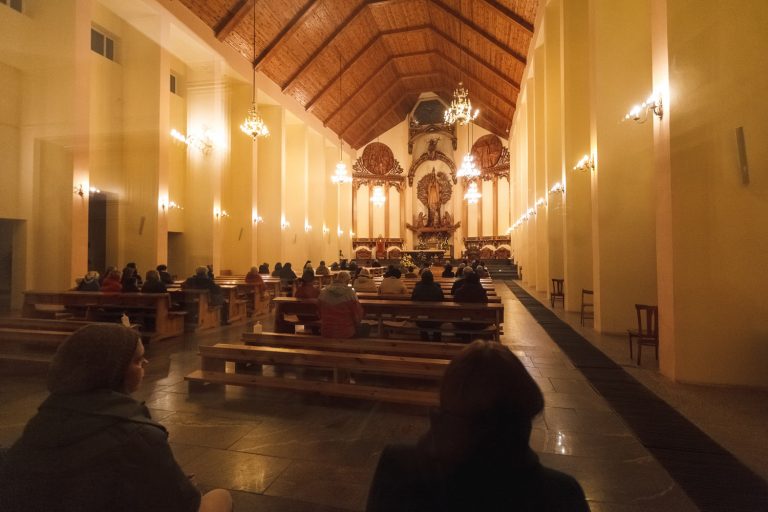
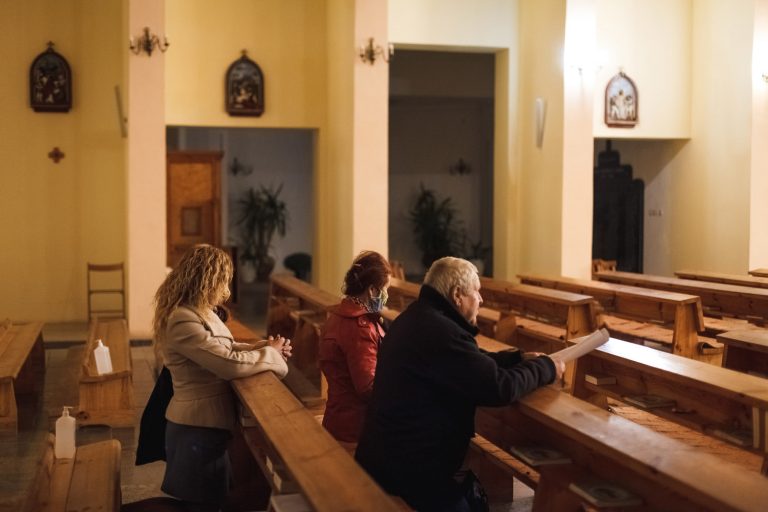
slideshow
Poles needed a place where they could gather, pray and continue their family traditions. Therefore, on major holidays, such as Easter and Christmas, families first went to the nearby towns for the liturgy. Sometimes I had to go all day, or even two. When those churches were closed, they were forced to pray only at home.
— We have a tradition at home: sprinkle the food on the holiday table with blessed salt. Since my parents could not go to church often, one day they went, consecrated the salt, and so they used it with a tentacle for the big holidays. And even if they no longer had the opportunity to go to church to consecrate certain foods (Polish pokarmy — food. — Ed.), They could already at home there consecrate, baptize and sincerely believe that the Lord has blessed all this, and can be consumed.

Local churches began to resume their activities even before the collapse of the Soviet Union, in the late 80’s. At first, clergymen came mainly from Poland to rebuild or start new parishes on the ground. Among the family relics that were carefully preserved throughout the period of Soviet bans and repressions were icons and prayer books. Many of these prayer books, prayed for by three or four generations of Poles, are still kept in families.
— Images were transmitted. That’s why they survived. Even with my grandmother as she got married. Images and princesses (prayer books. — ed.). Well, but the main thing was to convey the faith to believe.

Father Andrzej
Father Andrzej Mucha first came to Ukraine 25 years ago while studying at the Theological Seminary to help organize a pilgrimage of believers from Dovbysh to Berdychiv, to the main Catholic shrine of Ukraine — the miraculous icon of the Mother of God of Berdychiv. Then Andrzej remained to serve in Ukraine: first in the Roman Catholic parish in Odesa, then in Kyiv and Zhytomyr. He recalls that during his first visit to Dovbysh, he was shocked that Ukrainian was hardly spoken in the Ukrainian countryside and that liturgies were conducted exclusively in Polish. But over time, he says, this has changed and there are already more Ukrainian clergy in parishes, so they serve Ukrainian.
— In Poland, I had a priest I knew who went to the republics of the Soviet Union and told me a little about people’s lives and customs. These stories seemed so romantic to me that I wanted to come here to serve. In Dovbysh and Berdychiv I met just wonderful people. Hospitality, a kind of kindness: wherever you go, you are met, openly. I still knew the Ukrainian language a little, I knew a few words, somehow I tried to communicate. This, we can say, was love at first sight.
During his 13 years of service in Ukraine, Father Andrzej studied the Ukrainian language well, and then returned to Poland for 11 long years. Only in 2019 he was again offered to go to serve in Ukraine. This time — abbot of the Church of Our Lady of Fatima in Dovbysh.
— As the Soviet Union ceased to exist, the normal work and life of the people began, and it is clear that they want to pray here, because most of the inhabitants of Dovbysh are Catholics. And construction began in the 90s, ended in 1995. This year, if not for the coronavirus, we would be celebrating the 25th anniversary of the consecration of this temple.
The biggest shock for my father was to return to Ukraine, where the war has been going on for five years. It seemed that only memories and historical works about the wars in these lands remained, such as about the Second World War, says Andrzej Mucha. Instead, in Poland, which now actively supports the European vector of Ukraine’s development, he now talks about the war in Donbass.
— On Ukrainian television, Poland was shown as an example of change after communism, yes. For me, it was a sign of a changing relationship, that you can look each other in the face more friendly than in those days. It seems to me that politically and the Polish government emphasizes the role of Ukraine everywhere and sees Ukraine in the European Union. Poland is talking about the war in Donbass, about Crimea. Maybe because the Poles of the Soviet Union also suffered a lot and now they understand well what is happening in Ukraine.
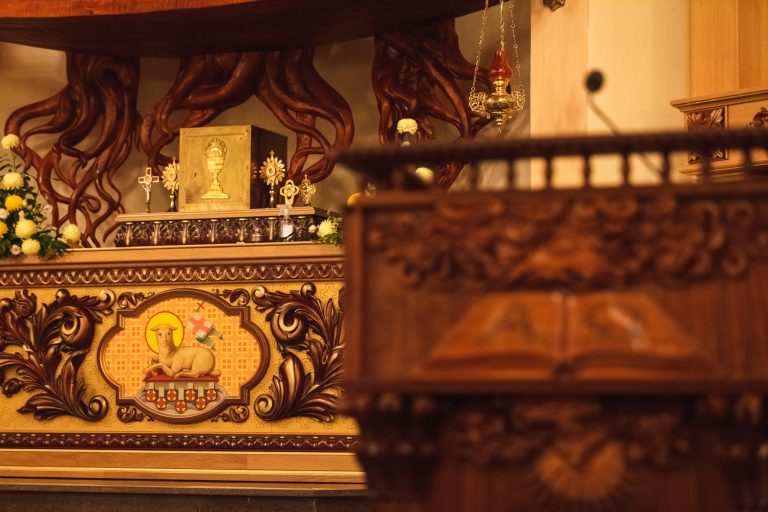
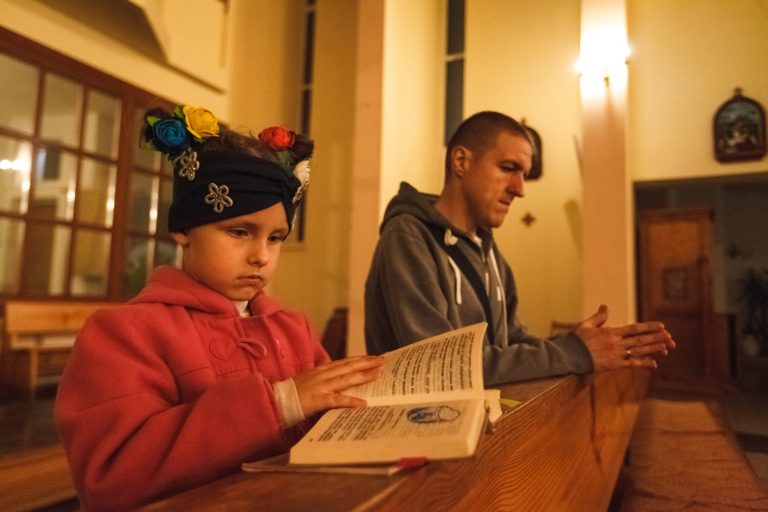
slideshow
Father Andrzej’s ministry as rector of the parish in Dovbysh will last at least three years. If the faithful or the higher clergy so desire, his term may be extended three times. The father himself has not yet decided how long he wants to stay in Ukraine.
— It is such a surprise for me that I returned to Ukraine. I don’t know what’s in my head. God is the god of surprises, he will make a surprise and we will see. I do not plan to return to Poland yet, I think I will stay here for a while.
Hrechany. Mazury
Today, Hrechany is a district of the city of Khmelnytsky in Podillia, and before it was a separate settlement of Masurians — peasants-migrants from Polish Mazovia, who from the XVIII century. compactly lived on these lands. There were several Mazury villages near Khmelnytsky: Matskivtsi, Sharovechka and Hrechany. These are the three main areas where the language of the first Masurians has been preserved: now here on the street you can meet people who speak this Old Polish language. Neither Ukrainians nor Poles understand them.
Why did the Masurians settle on the lands of modern Podillia? Locals tell such a legend that the devil allegedly wore mazurkas in a bag with a small hole. Where they fell, there they settled. In fact, after the establishment of Turkish rule in 1672, the village of Hrechany fell into disrepair. When the Turks left Podillia in 1699, these lands returned to the possession of the Polish lords of Zamoyski. In order to quickly raise the estates from the ruins, the Zamoyskis received privileges for the new settlers from the Polish king and began the resettlement of the Mazovian peasants, the Masurians, to their Podillia lands. Many Polish settlers received land in the devastated Hrechany.
— We moved whole families to cultivate the land here, to be able to live normally. Three hundred years ago, people moved here, formed their own communities. They continued to live here, to communicate in their own language. Having their own language, they were not very willing to communicate with other people, so they lived with each other for three hundred years.

Roman Hurnytsky, a public activist and researcher of the history of Mazury Poles in Podillia, is a Ukrainian of Polish descent. His whole family are descendants of the Masurians. Roman says he became interested in his family’s history when he asked his grandfather decades ago what his grandfather’s grandmother’s name was. And his grandfather did not tell him.
— Our families were repressed, shot. Imagine, two thousand years, an independent Ukraine, and he (grandfather — ed.) Does not want to tell me the name of his grandmother, although I know where to look in the archive, things are now open. I realized that people actually have a fear that they are Poles, live in this area, compactly, peacefully, did not touch anyone. I found this topic interesting. I am not a historian at all, I am an economist. But I wanted to explore it, to explore other families.
It was not customary in Roman’s family to talk about the past. It was here, two years ago, that Roman and his parents found out where their grandparents were buried, where they were taken, what they were shot for, and what fictitious cases they were tried for. It was a revelation for the family.
Poles from Hrechanyy and neighboring villages in the 1930s, as well as those from Volyn, were repressed on national grounds as “unreliable elements,” and many were shot. In 1937, there was a 60-kilometre zone to Zbruch, and by order of the People’s Commissar of Internal Affairs of the USSR Nikolai Yezhov, the territory had to be cleared of dissidents.
— All Polish villages began to be repressed, especially Hrechany. There was bilingualism, correspondence was conducted in both Russian and Polish. I have documents that were duplicated in Russian and Polish, such as a birth certificate, death certificate, and others. Therefore, it was easy to identify Poles, in almost a few months they knocked on every house, took them with them and shot them.

Roman
Roman Hurnytsky, like several generations of his relatives, was born in Hrechany. As a child I heard Polish at home. He works in the municipal enterprise “Ploskyriv” and in the public organization “Club of the Polish intelligentsia” Servus “. The NGO currently has 10 active members who organize Polish language courses, cultural, educational and social projects.
The utility company where Roman works takes care of children’s leisure, sports competitions and clubs for local youth. Working with children every day, Roman notices how their childhood differs today from the one he had — imbued with Masurian traditions, family stories and holidays. Therefore, he and his colleagues initiate projects on the history and traditions of the Masurians, which would be of interest primarily to young people.
— In fact, children will always find a common language. This is a normal childhood, but especially in such moments that were supported, such as religion, communication, traditions, there is a difference. Traditions are very interesting, for example Epiphany, where people dress up, go from house to house, sing carols. There is no such thing here and we want to restore this tradition, sew costumes and masks, looking at photos.
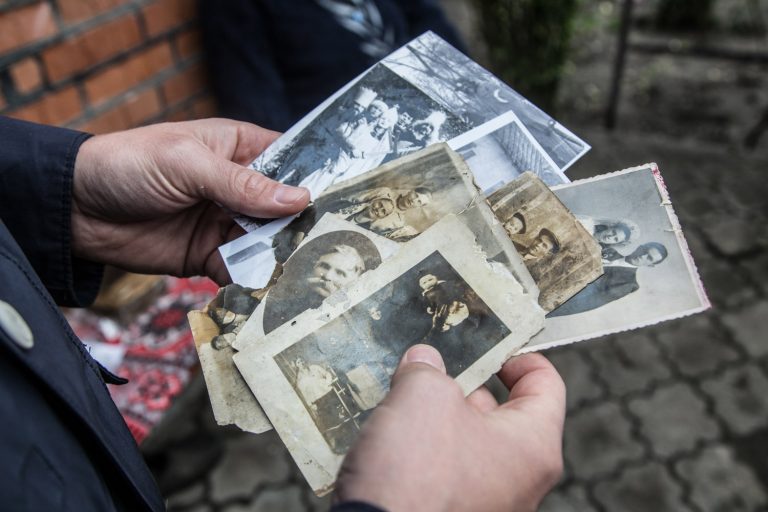
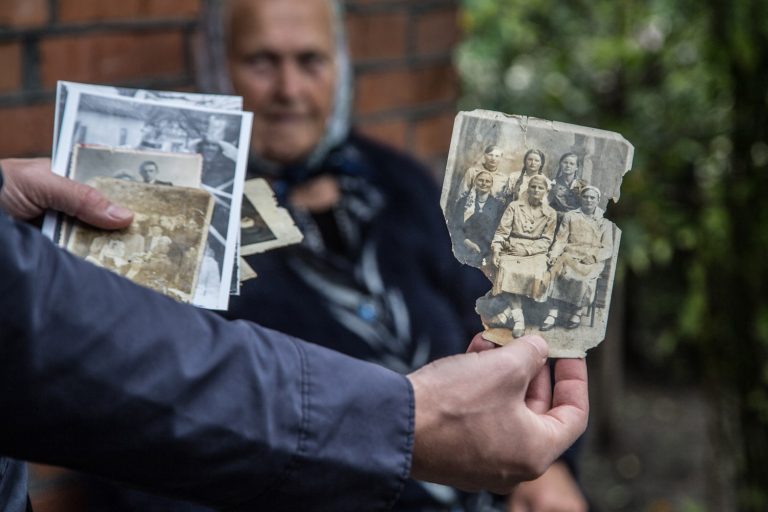
slideshow
Roman can tell how modern children perceive a return to ancient traditions by watching their own son.
— At Christmas, Grandma Anna still spreads hay, absolutely everyone in the family gets on their knees, and she throws candy, and we catch these candies, that is, these are the family traditions that are passed down. In fact, I think that he (son — ed.) does not realize what these traditions are, he will only later understand that we do so and someone does not. Therefore, when he has a conscious choice, then he will say, but now he participates in it without realizing it. We try to continue what we have.
Roman Hurnytsky calls himself a Ukrainian of Polish origin. He says that he and his whole family are Poles and Ukrainians at the same time.
Previously, one-story clay houses were typical buildings of Hrechany. Roman Gurnitsky’s grandmother Anna Pirog lives in one of these houses. Roman says that his grandmother basically does not want to leave the old house for high-rise buildings, many of which have already appeared in the neighborhood. As Khmelnytsky grew and businesses were built around the city, there was a need for housing for workers, so dormitories and prefabricated houses were built en masse here, and old Masurian houses were demolished. My grandmother’s house was the last and, according to Roman, they simply did not have time to demolish it. And then they forgot, and so she remained standing.
— Factories needed labor, this was a really industrial area, which was demolished. I remember that there was a stream near each house and water flowed. I don’t know where the water went now, but there was a full-fledged river here. It was poured here, built up.

Grandmother Anna. German cocoa and concentration camp
Anna Pyrog has never seen her father. She was born in April 1938, and her father was repressed in December 1937. Grandmother’s memories became for Roman Hurnytsky the first bridge to study the history of their family, the first impetus to record such memories of other residents of Hrechany.
— My older brother was. He did on the railroad. My mother worked on the collective farm, my grandmother took care of me. I went to school. We had a teacher, Ivan Pylypovych, who beat his hands a lot. And in the class there were children born in 1933 and 38th and 40th… All in one class. They spoke Masurian during breaks and studied Ukrainian. And now the priests have learned to speak Ukrainian. We have such a young priest, he says: “I will learn Ukrainian, I can’t do anything.” Because he graduated from seminary and came — he doesn’t know a word of Ukrainian at all. Well, and now everything is already in Ukrainian.
Priest
Roman Catholic priest (Polish: ksiądz).Anna, like the Poles in Volyn, recalls that the church in Hrechanyy was closed during the Soviet era and their prayer meetings were persecuted by the police. The clergy were also often powerless before the regime. It was the clergy and educators of all nationalities who became the first victims of the Soviet repressive machine.
— After the war, the church did not work. They came to celebrate Easter, then ran, the police dispersed. And there was such an old time. We went there at night to celebrate: my mother was on our shoulders, the whole street was gathering in a small hut. The priests were somewhere in the church, they were afraid to go out.

During World War II, the house where little Anna lived housed the German military.
— There was a kitchen in that house, and they slept with us. As they smoke, you can’t see it in the smoke. And yes, well, it was good. And the parcel went to him. I’m still sitting on my neck. He takes it out, opens the box, and there is cocoa (very tasty cocoa, it still smells to me, nowhere else), candy, cookies, chocolates. And he gave me everything. That’s what I needed.
Anna also remembers how guards came to their homes during the mass dekulakization, whenever you had anything, they took everything to the last.
— They hid under the bed from those who went, well, on bonds. And it is necessary to give money, to give 350 rubles, to hand over 230 liters of milk, meat — 40, eggs — 240. Then we on foot carried on tractors of children, at us there, in Rakovo of a tractor details, and there, on that handed over… Rabbits kept. Those rabbits passed, and they didn’t even see anything.
Not far from Hrechany, in the Polish-Jewish town of Proskuriv, Roman and Anna are mentioned, there was a concentration camp where the entire Jewish population of these lands was gradually exterminated. Poles often hid Jews so that they would not be exposed. Sometimes they had to hide for several years. Anna recalls that her relatives also hid a Jewish family, and as a result, the whole family survived.

Dom ludowy
In addition to researching and popularizing the history of local Polish-Masurians, Roman Gurnytsky has been in charge of the restoration project of the building, which was once the cultural and public center of Hrechanyy — the Polish People’s House or Dom ludowy.
The Polish community constantly dreamed of their own house, and when the so-called period of “indigenization” came, they were allowed to build an ethnic house with their own educational, cultural and recreational program. Each resident from each yard gave five rubles, worked on it voluntarily and built a house. Until 1937, cultural life took place here, then the Soviet authorities took away this house and began to use it for their own purposes.
Rooting
The policy of involving representatives of the indigenous population of the Soviet republics in local government and granting official status to their national languages. Held in the USSR during the 1920s.But the confiscated house was not the only manifestation of Soviet repression, Roman says. Almost 80% of men in Hrechany were shot for being “spies.”
— Almost every resident of Hrechany (in the family) has someone who was shot. For example, my three great-grandparents were shot for building this house, who were allegedly spies for foreign intelligence, in this case Poland. There was an order from Stalin to clear the territory because the Zbruch River was 60 kilometers away and it was believed that in case of any riots people would support it because there was famine, there was disagreement with the collective farm, so they were unreliable people in the eyes of Soviet authorities.
Dom ludowy in Hrechany is a rare object in the territory of the former Soviet Union, which was built by the ethnic community and has been preserved.
— It has been preserved due to the fact that it is not in the center, it is a huge plus, it reminds us today that it is a “people’s house”, a people’s house, which was carved out of bricks, it was difficult to destroy. Either the whole house or not. This brick is unique, it is from that period. As part of public initiatives, we will clean this brick and wash it.

The house with an area of 520 m2 has different tenants and to bring it into a single concept is quite difficult. Roman Hurnytskyi says that employees of the Ploskyriv sports and cultural centre have invited volunteers from the Let’s Build Ukraine Together movement to organize a public space in the People’s House.
— It is like a point from which the house itself should grow, because we have a concept of functioning of this house, its filling, financial component. The regional union of Poles has been renting the second floor for ten years. We do not have access to this room. In fact, we planned the general concept of the operation of this house, but we started with what belongs to us.
Having three repressed ancestors who built this People’s House, Roman could not help but join in the restoration of this historical heritage.
— Together with public activists, the utility company responded, which took over the costs of registration of the land plot, registration of the building itself. Since then, work has begun. They held a public hearing, won a small grant, together with volunteers, architects made a general concept: the functioning of the building, the area behind.
At one of the meetings, Roman was told about BUR and he became interested. The man submitted a project to create a youth space for the educational foundation and “BUR” chose this object for implementation in 2020.

— Everyone is definitely in favour of having a good time with children, to have clubs, to gather, to support the culture of the Masurians who live here, because there is a dialect, its history, it’s really very interesting.
Roman says that a small amphitheatre is planned in the building for events, for communication between mothers and children. There is also a need for classes in the neighbourhood, in a café to communicate, to wait for children.
— When the community united, voluntarily purchasing material and building this house, they made an inscription stating that it is a people’s house, it now corresponds to the public space. He performed the same function from 1928 until 1937 here in the neighbourhood.
Because the People’s House has not functioned as a public space for a long time, many Hrechany residents, especially the older generation, associate it with a school. But they continue to follow the changes and empathize with those who create them.
— For example, we told about “BUR” and a woman who lives nearby came and said: “I want to feed the volunteers because they came to this house, and they will work, they definitely need to eat.” Some say: “Oh, there is a shop here” or “I drive here every day, but what, this is such a historical heritage?”. You start to tell and it becomes clear that the locals who have recently started living there do not know that this is a historic building.

Book of memories. Stories of the Masurians
Since Hrechany became a dist of a big city, family stories are told here only privately, older people gradually leave and these stories disappear with them. So a few years ago Roman Gurnytsky initiated a book project of a collection of such stories, illustrated with archival photos. Roman’s youngest son became the first reader.
— There are more mixed marriages, there was no such thing in principle before, there is less language. Therefore, it is very important to keep it, to record it. We collected old photos, stories of people in this neighborhood for that, because at some point I realized that my child will not even know any moments that I know. That’s why we at least recorded it all, tried to encourage it through the Internet, through books. He may not be interested at this age now, but everyone has a moment when (you ask yourself): “Who are my parents? What do they do? How are they different?”
Roman began with the stories of his family, and then he and his colleagues went from house to house and recorded all the willing fellow villagers.
— We have a large family and my grandmother likes to gather everyone at a big table. In fact, when everyone comes together and the floor is given to the eldest, she tells stories, and I have always been very interested in her stories about how it was here during World War II, how people lived here, how they communicated, what the traditions were. I understood that every family has such interesting stories.
The recorded memoirs of about forty residents of Hrechany were arranged according to different historical periods and a bilingual book was published with the support of the Ukrainian Cultural Foundation. A mobile exhibition has been created for the presentation of the publication, the information stands of which are planned to be placed in the People’s House on a permanent basis.

— It was interesting for me to write down not so much some numbers, so many interesting, living stories, to show the history of this territory through the stories of people. Does anyone remember anything about World War II? For example, if we say that when there was a railway station and a train overturned here, then almost all Hrechanians lived from what they pulled from that train. Before that, no one had seen such shoes and clothes here. In fact, it is much more memorable than any other date.
Roman recalls that when they started rebuilding the People’s House, they realized that without a foundation, this project would not be successful. Therefore, first of all he wanted to tell about the territory and explain why it is important to preserve this house.
— The stories about the mazurkas that we have collected are a kind of wrapper in which we can wrap the house itself. So that everyone could look for their stories, know where they come from, appreciate the stories of their parents, the stories that are told to them. I know some people who have been inspired to collect photographs in their communities, a description of what is happening there, seeing our work. That’s why we did it all.
supported by
Material prepared with support of United States Agency for International Development (USAID)
